3 Things On Offense Every Youth Coach Should Teach
These tips could improve your offensive scoring by 10 to 20 more points per game by the end of the season. They have for me.
As a youth coach, I've made every mistake in the book.
From an offensive standpoint, this involved running too many set plays, trying to teach patterned offenses, and trying to teach too much too quickly.
However, here are the things that you should focus on.
The things that will make your players much better in the long run.
1 - Spacing
"Offense is spacing and spacing is offense."
- Chuck Daly (2-Time NBA Champion and Olympic Gold Medalist)
Quite simply, when you have proper spacing between offensive players, it makes it harder for the defense to stop you.
The defense has to cover more ground to help.
They have to cover more ground to close out and defend the shooter.
This leads to more scoring opportunities.
And on the opposite spectrum, if you have players too close together, one defender can guard all of them. This gives the advantage back to the defense.
What is proper spacing?
Generally speaking, players are spaced about 12 to 15 feet apart.
However, it can also be summed up as... Find an open spot.
If your defender has to help stop one of your teammates, put yourself in a position where you're going to be open.
One of the best concepts I've heard describe this is string spacing. I don't know who created it, but I got it from Brian McCormick.
Basically, you pretend that there is a tight string between you and the ball handler.
If you get too close to the ball handler, the imaginary string will get loose.
If you keep a proper distance from the ball handler, the string will stay tight. You want the string to stay tight.
Here are a couple of drills to practice this concept.
String Spacing - Dribble At Wing
String Spacing - Dribble at Post
To read more about the drills, here they are:
Next, you should add defenders. Here are some great drills to practice spacing and decision-making.
|
Spacing Drill - 2 on 1 4 makes the dribble move and looks to score. The defender gives the offense different looks to force different actions. There is one pass limit. |
|
|
Spacing Drill - 2 on 1 with Chaser This is the same as the situation before, except now you add a chaser. There is a two pass limit. You can also add dribble limits if you would like. |
|
|
You can also add multiple chasers to really amp the speed of decision-making. At first, I would have the third chaser come one or two seconds after the first chaser. |
|
2 - Ball Movement
To move the ball, you either dribble or you pass.
For my teams, if you're dribbling, you better be attacking the basket. Otherwise, you sit.
So attack or pass the ball. Rarely, do I want a player to hold the ball.
And since I've never had a team that didn't dribble enough, I put a lot more emphasis on the passing aspect of ball movement during practice.
When you pass, the ball moves quicker than anybody can run.
By doing this, each pass creates a mini-advantage. On the catch, the defensive player is typically still transitioning and/or isn't set.
If it's a good shot and you're open, you can shoot. Or you can use their momentum coming towards you against them to drive.
Or if you see a better scoring opportunity, you immediately pass the ball.
You end up with players passing when they should and attacking when they should.
Anybody who has watched the Spurs or the Warriors recently has seen this beauty in action.
A simple way to drive home the point of passing and ball movement to your team
To teach this point to your players, get them together and stand on the baseline. Make sure to have a basketball in your hand.
Then say, "Who is the fastest player on the court?"
Normally, one or two players will step up.
Then say, "I bet I can beat you to the opposite baseline by barely trying."
Then start the race. You don't move. You simply throw the ball to the opposite baseline.
Then you ask them... "If a pass is faster, what is a good way to get the defense out of position to get open shots or open driving lanes?"
Drills To Improve Ball Movement
Many of the drills in this article are great for teaching ball movement.
However, no-dribble drills are great for improving passing, ball movement, and spacing.
You simply play basketball, but you don't allow a dribble.
You can do 3v3, 4v4, or 5v5.
If you dribble, it's an automatic turnover.
Not only is this great for passing, it's great for...
- Improving offense
- Teaching players how to get open
- Developing footwork to create space from the on-ball defender
- Using pass fakes to move the defense and create openings
You can also progress to two or three dribble limits.
This allows them to dribble but still puts an emphasis on ball movement and passing.
It also teaches your players to be effective with their dribble.
3 - How To Get Open - Cutting and Screening AKA Player Movement
As a high school coach, if you brought a group of kids who could keep spacing, pass the ball, and simply cut and get open, I would kiss your feet.
You wouldn't even need to teach screening and I'd be very happy.
While there are many different cuts and screens, you don't need to worry about that. You just need to do a few of these things well.
For cutting, you could simply teach basket cuts and backdoor cuts. Personally, I also like to teach V-cuts and L-cuts as additional ways to get open.
For screening, you could just teach pass and screen away. You might even progress to ball screens.
For beginners typically 8 to 12 years old, I may go the entire season without teaching screens. So don't feel like you need to teach all of this in one season.
|
Backdoor Cut After you cut to a spot, if you are not open or overplayed by the defense, you cut backdoor to the basket. |
|
|
Basket Cut You simply cut to the basket. An offensive concept where this is typically used is called the Give-And-Go. You pass the ball and cut to the basket. |
|
|
V-Cut You take the defender towards the lane (shallow) or into the lane (deep), then cut to a perimeter spot. The shape of your cut will resemble the letter V. |
|
|
L-Cut The player forms the letter L with their cut. In this example, the player cuts up towards the elbow, then pops out to a wing spot to receive a pass. |
|
Here is a drill that you can use to teach players the different cuts with multiple players on the floor.
In the video below, Coach Jim Huber demonstrates a 5-out passing and cutting offense. This literally can be your whole offense. I've seen high school teams win state championships with this as their core offense.
If you'd like a more in-depth understanding of cuts, check out this article:
Moving Without The Basketball: How To Use 12 Basketball Cuts To Score More Points
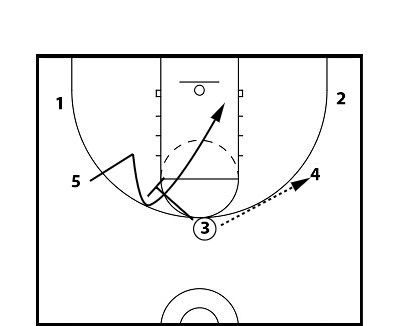
Pass and Screen Away
Here is what passing and screening away would look like in a 5-out offense.
First, the player passes the ball. Then they screen in the opposite direction of the pass.
Competitive Drills With Defenders
Note, when first teaching these concepts, you can teach without a defense. However, I like to quickly get to drills where defenders are present that force decision-making.
Practicing against a defense also adds more context. Players better understand why you're teaching them these different type of cuts and screens.
Here is a drill that you can use to teach decision-making on a cut. Based on the defender's position, the player decides whether to pop out to the wing or cut backdoor.
Another great way to work to practice cutting and screenings is to use the no-dribble drill from above.
To work on cutting, you can set up a rule that you must basket cut after every pass.
To work on screening, you can set up a rule that you must screen away after every pass.
Then as your players get better, you can tell them to pass and move. They decide whether to cut or screen.
Well, we hope these tips help you and your team.
If you teach these concepts of spacing, ball movement, and player movement, your players will have a much better chance to succeed in the future.
Resources:
Don Kelbick's Motion Offense -- DVD 2-Pack & Supplemental eBook
How To Teach Skill Development And Your Offense At The Same Time
What do you think? Let us know by leaving your comments, suggestions, and questions...
|
|||||||

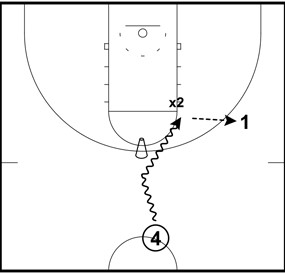
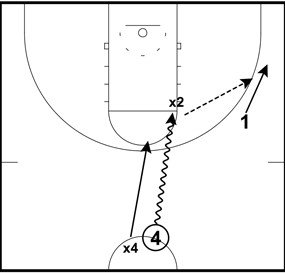
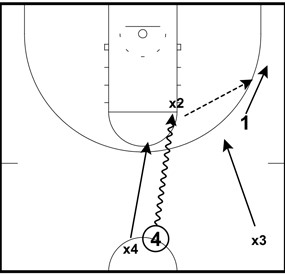
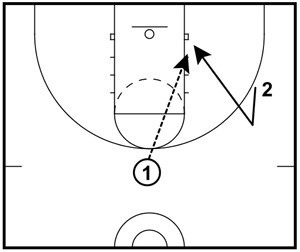
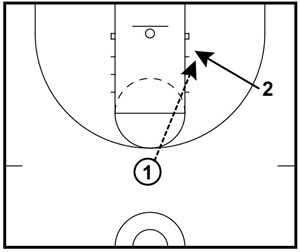
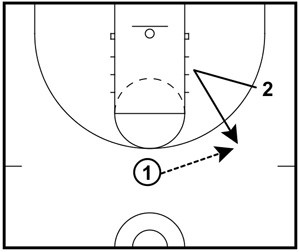
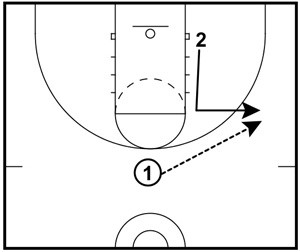


 Facebook (145k Followers)
Facebook (145k Followers) YouTube (152k Subscribers)
YouTube (152k Subscribers) Twitter (33k Followers)
Twitter (33k Followers) Q&A Forum
Q&A Forum Podcasts
Podcasts